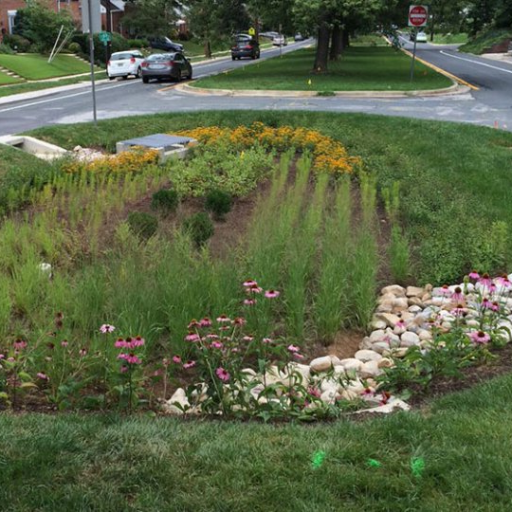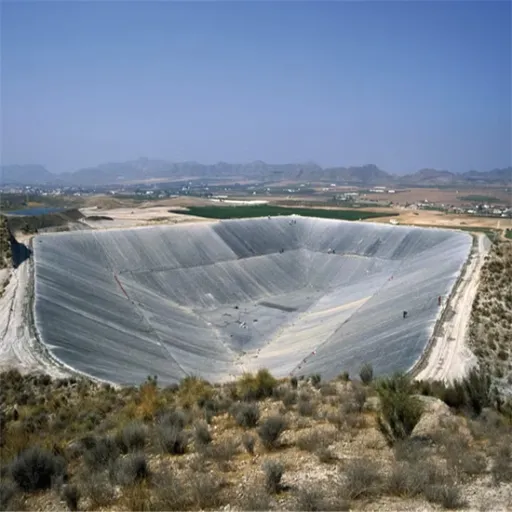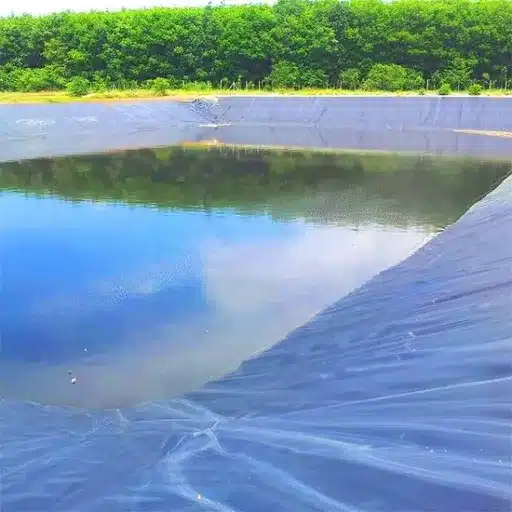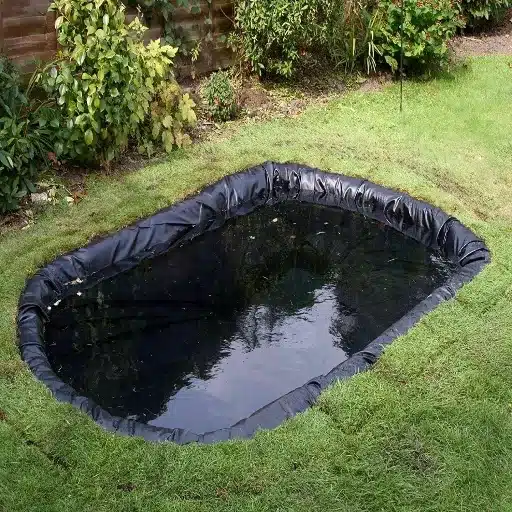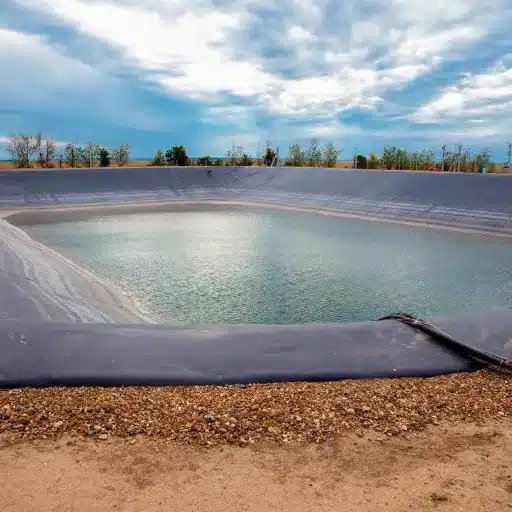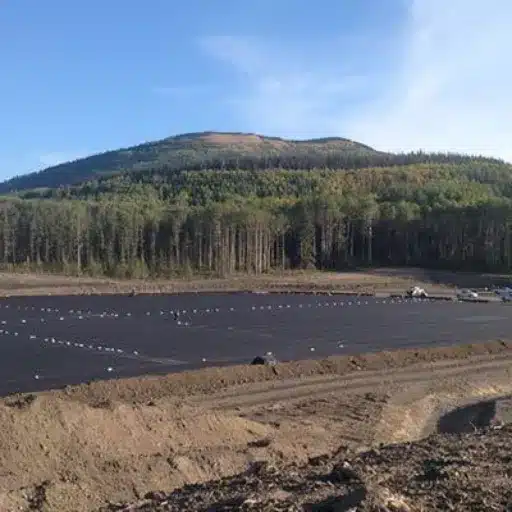Green Stormwater Infrastructure (GSI) is changing the way communities carry out their stormwater management by proposing creative solutions that are good for urban systems as well as ecosystems. Rather than entrusting stormwater management entirely to traditional engineering techniques such as concrete pipes and retention basins, GSI uses stormwater conveyance systems that work through processes of nature or through the use of green spaces to absorb, filter, or simply direct stormwater away. But, why does this need to be emphasized? As urbanization proceeds and climate change brings about more intensive storms, the stormwater management method needs to be sustainable and effective. This article looks into the very basics of GSI—what it is, why it is very much needed, and how it is helping cities become resilient and truly livable. Whether you are in city planning, on the defensive end of the environment, or perhaps just a curious soul looking for sustainable solutions, this manual shall have something to offer you in the way of insight onto this new form.
Deeper Insight Into Green Stormwater Infrastructure
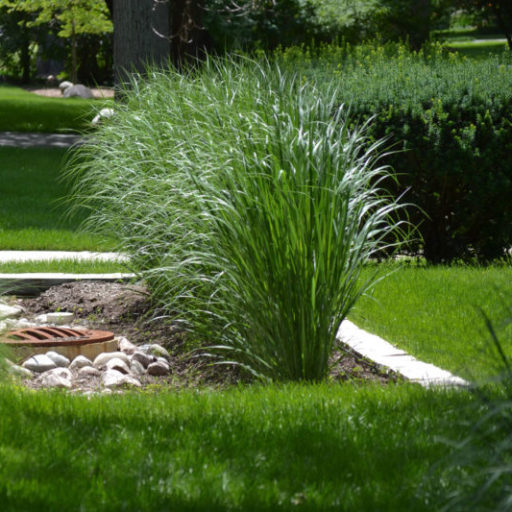
Green Stormwater Infrastructure means sustainable solutions developed with the goal of managing and utilizing stormwater for the good of the environment and communities. Unlike conventional systems that quickly channel water from reaching the environment, protection sites, or breeding grounds, GSI tries to filter and absorb rainfall where it falls by mimicking nature-an example being by way of rain gardens, green roofs, permeable pavement, and street trees. These systems ease flood conditions, improve water quality, and beautify the urban landscape all toward climate resilience.
The Definition of GSI
Green Stormwater Infrastructure, or GSI, consists of a series of practices and techniques, both conventional and innovative, that treat stormwater through processes that mimic the environment. While conventional systems quickly favor diversion, keeping rainwater at its point of source incentivizes infiltration and filtration with least environmental degradation and some community development benefits. Such systems include many varieties of intervention like rain gardens, bioswales, green roofs, permeable pavements, and urban tree canopy.
Recent data strongly support the increased efficiency of GSI in managing stormwater in tandem with solving urban challenges. Studies report that green roofs can retain over 75% of rainfall in the planting media, thus reducing runoff and cooling urban areas. Permeable pavements allow 70-80% stormwater to go through seepage, replenishing groundwater and thus lessening the burden on municipal sewer systems. Urban tree canopies intercept rainfall, stopping 20-30% of runoff and facilitating water quality while providing shade that combats the urban heat island effect.
Cities that implement GSI report measurable benefits. Initiatives in Philadelphia, such as converting 10,000 acres of impervious surfaces to GSI, are projected to achieve a 50% decrease in sewer overflows by 2036, create green spaces, and increase property values. Such data shout both the fortification for climate resilience and improved urban livability.
Why GSI Matters in Urban Planning
GSI is important in modern urban planning to tackle environmental, social, and economic problems. With rapid urbanization, cities are faced with increasing stormwater runoff, floods, and decreasing water quality from impervious surfaces such as roads and rooftops. GSI implementation helps reduce these peculiarities by stopping stormwater from sedimentation, evaporation, and infiltration through natural processes.
According to the U.S. Environmental Protection Agency (EPA), GSI reductions in stormwater volume are estimated at between 30 and 70%, thus significantly lowering the chance of flooding. New York City is an example of a city that has considerably invested in GSI, with its Green Infrastructure Plan expected to save $1.5 billion for water management costs over 20 years, relative to traditional infrastructure. Seattle reports that its GSI efforts like bioswales and urban tree canopy improvements contribute to capturing nearly 700 million gallons of stormwater annually as a global leader in sustainable urban planning.
GSI, aside from the environment, improves the urban quality of life. Green areas constructed as part of GSI projects have been shown to reduce urban temperatures by up to 5°F, with such combating effects on urban heat islands. Furthermore, they promote biodiversity by offering habitats for birds and pollinators, building beautiful neighborhoods to GSI standards. Economically, the infra raises property prices, with estimates putting the appreciation of properties near green infrastructure features at 2-5%.
The integration of GSI into urban planning is more than an environmental imperative; it is an investment in the health, resilience, and prosperity of cities. Giving refugee to sustainable design, municipalities would secure against climate change in the near future while enriching vibrant, livable spaces for their denizens.
Core Principles of Stormwater Management
Effective stormwater management rests on some basic principles aimed at runoff control, water quality improvement, reduction of urban flooding, etc. The following outlines some of them, supported by recent data and insights:
Minimizing Impervious Surfaces
Urban areas with high impervious surfaces, concrete and asphalt, worsen runoff problems. Studies reveal that conversion of just 5% of impervious urban surfaces into permeable would slash annual runoff volumes by as much as 20%; in turn, the benefits of permeable pavements, green roofs, and vegetative cover become quite measurable.
Green Infrastructure (GI) Implementation
Green infrastructure GI systems, including rain gardens, bioswales, and constructed wetlands, provide for stormwater treatment through natural filtration methods. The EPA shows that bioswales can reduce 50% of the total suspended solids in runoff, thereby greatly improving water quality; green roofs, meanwhile, retain 60-80% of rainfall depending on design and external factors.
Enhancing Stormwater Storage
Retention ponds, cisterns, and other stormwater storage systems are intended to slow down and hold most of the peak flow during storms. Studies prove that if well designed, retention facilities can reduce peak flow rates by more than 40%, thus easing pressure on municipal stormwater systems.
Community Engagement
Public awareness and participation are key to proper management of stormwater structures. In one recent instance in Seattle, from neighborhoods who had been part in a stormwater education program, rain barrel use had gone up by 15%, thus contributing to runoff capture and alleviating the strain on local infrastructure.
Through these principles supported by recent technological advances, cities may establish stormwater management systems that would remain cost-effective toward building sustainable urban ecosystems.
Methods and Technologies of GSI
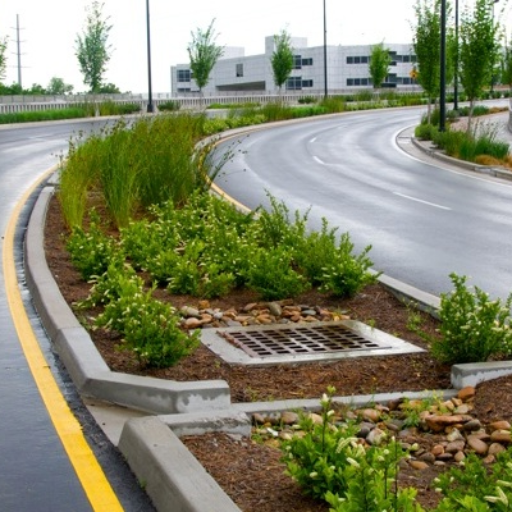
The principal representation of the concept of GSI is an integration of natural processes with technological ones for the treatment of stormwater. The methods entail rain gardens, permeable pavements, green roofs, and bioswales. These systems absorb and filter rainwater where it falls on land, thereby reducing runoff while enhancing water quality. The newer technological concepts incorporate smart sensors that monitor water flow and control the various systems in real time for maximum efficiency. Such a set of methods and technologies offers sustainable and cost-effective options in urban stormwater management.
Rain Gardens: Design and Function
Rain gardens are shallow, landscaped depressions designed for the vertical and lateral infiltration of sustenance and limitation of its runoff on impervious surfaces such as roofs, driveways, and sidewalks. Generally, they are planted by native species to allow for the hardest of conditions where their wet-wet-dry cycling filters out pollutants and allows the percolation of filtered water into the underlying aquifers. Watershed Management in 2023 spotlighting rain gardens indicated that the most stormwater runoff can be reduced from any given site by close to 99% due to rain gardens, depending on soil and vegetation.
From recent research, it has been carried out that rain gardens have up to 90% retention capacity for nutrients and approximately 80% for sediments, which substantially lessens nonpoint source pollution. Furthermore, rain gardens retain about 30% more rainfall than ordinary lawns. Hence, these gardens serve as a prominent climate resilience strategy in cities prone to large precipitation events.
A range of installation costs, depending on soils, vegetation, and design intricacies, lies somewhere around $10 to $15 a square foot. These prices are far outweighed by the savings brought about by reduced flooding damage that includes improved water quality and ecological gain. The examples that Philadelphia has provided demonstrate how ingenious community rain garden programs can not only pay strong equity interests related to stormwater of such programs, but also aid in the enhancement of aesthetics and social values.
Permeable Pavements: Benefits and Applications
Permeable pavements are a recent method applied to treat stormwater on site more efficiently in urban settings. These pavements reduce surface runoff and flooding while simultaneously contributing to recharge of groundwater by allowing water to pass through the surface layer into the permeable layers underneath. In their capacity as reduction agents of runoff, permeable pavements may achieve a reduction of between 70% and 90% in runoff volume when properly installed (). This reduction is very much sought after in sustainable planning in cities.
Some permeable pavements consist of pervious concrete, porous asphalt, and interlocking pavers with gaps designed for infiltration. Permeable pavement can still bear heavy loads and last 20 to 40 years with necessary maintenance, according to recent scientific findings. A 2023 report stated that the use of permeable pavements could allow directly in reduction of large-scale stormwater infrastructure hence saving municipalities millions in construction and maintenance costs.
Moreover, permeable pavements also take care of water quality by filtering contaminants such as oil, sediment, and heavy metals so that they are not discharged into nearby waterways. For instance, a California study suggests that porous asphalt surfaces retained up to 95% of anthropogenic metals commonly found in urban stormwater.
Apart from that, permeable pavements can also reduce heat from urban areas. In fact, pervious concrete tends to be cooler than conventional asphalt since it provides better air and water circulation. The integration of these features in urban designs would, thus, solve environmental problems while enhancing aesthetics and livability.
Green Roofs: A Sustainable Solution
Green roofs, commonly known as living roofs, represent a modern solution for urban environments with a blend of environmental and architectural functionalities. The roofs are designed by layering vegetation, soil, and waterproof membranes on top of buildings. According to recent studies, during summer, green roofs can lower indoor temperatures by 6-8 °F, which helps to save cool energy substantially. Green roofs also manage stormwater well, absorbing 70-80% of precipitation, thus assisting in flood risk reduction in urban areas. An NRC Canada report suggests that green roofs may extend the useful life of roofs by up to 20 years by providing protection to structural materials from harsh weather conditions. The green roofs improve air quality by filtering pollutants and carbon dioxide, thereby reducing heat island effects by very nature of them being shaded, cooler surfaces. Integrating green roofs into urban areas may therefore assist in preserving biodiversity and resolving some pressing environmental concerns.
Benefits of Green Stormwater Infrastructure
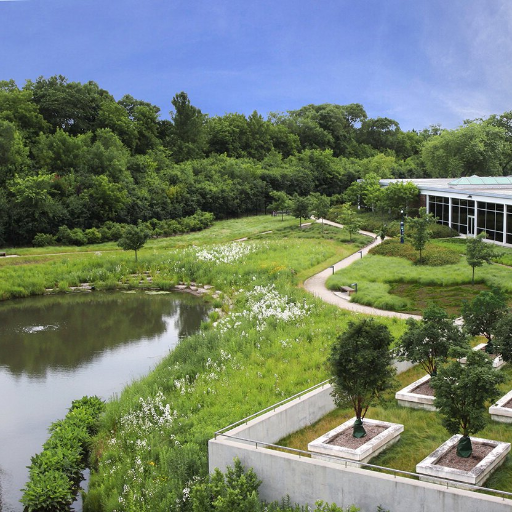
To me, the advantages of green stormwater infrastructure are numerous: it deals with stormwater management, increments water quality, lessens flooding chances, along with sustainable urban planning. By supporting bioswales and having such solutions, we are developing further resilient cities while guarding natural waterways.
Flood Mitigation Strategies
Efficient flood mitigation mechanisms to lessen the impact of heavy rainfall incidences over urban areas are paramount. Studies today reveal that GSI works extremely well with excess runoff management. These bioswales are some vegetated channels capable of capturing and infiltrating stormwater and are cited as reducing peak runoff up to 25% by research of the EPA. Also, while providing their benefits in overtopping the lawns, rain gardens may soak up at least 30% more water than any other lawn system, making it a hazard for urban flooding.
In addition, permeable pavement systems, being a new GSI technique, reduce surface runoff by almost 70% since they allow water to permeate into the soil. In a case from Chicago, during storm events, water pooling reduced by 40% due to the application of permeable pavement, giving an account of its proven benefits. The use of these devices in urban planning alleviates the pressure on traditional drainage systems and puts cities at advantage against shifting climate patterns and heightened rainfall intensities.
Improving Water Quality through GSI
Green Stormwater Infrastructure improves water quality by capturing and treating stormwater runoff before it enters natural water bodies. It acts as a filter to remove contaminants such as heavy metals, oil and grease, and sediments commonly found in urban runoff. The Environmental Protection Agency (EPA) states that bioretention areas, like rain gardens, can remove 80% of total suspended solids and 40-60% of nutrient pollutants such as phosphorus and nitrogen. By allowing water to infiltrate into the soil, these systems rely on natural biological and chemical processes for contaminant elimination.
In addition to lowering the volume of runoff, permeable pavements are capable of filtering out pollutants. A study from the University of New Hampshire Stormwater Center discovered that porous pavements remove 95% of hydrocarbons and 80% of metals from stormwater consistently. Once put on the forefront of urban landscapes, these cutting-edge techniques improve the quality of surface water while mitigating the risk of water contamination, which contributes to better ecosystems and safer water supplies.
Enhancing Urban Biodiversity with Green Infrastructure
Green infrastructure has an essential role to play in creating urban spaces that support biodiversity, providing habitats for flora and fauna even in highly managed areas. Recent research highlights the ability of green roofs, urban parks, and vertical gardens to boost species richness. For instance, a report published by Nature Urban Ecology in 2023 found that in metropolitan contexts, green roofs may contain up to 86 plant species per 100 square meters, in addition to dozens of species of pollinators such as bees, butterflies, and beetles.
Furthermore, information collated in recent urban planning initiatives via Google shows that cities that invested in green infrastructure solutions, such as Singapore, have seen a 47% increase in urban greenery coverage in the past two decades. As a consequence, these ecological gains have switched microclimates to be cooler, have better air quality, and have provided corridors for urban wildlife. By extension, this shows that the process of integrating nature into urban spaces leads to the creation of thriving and sustainable ecosystems while simultaneously counteracting some of the environmental damage brought about by urbanization.
Successful GSI Implementation Case Studies
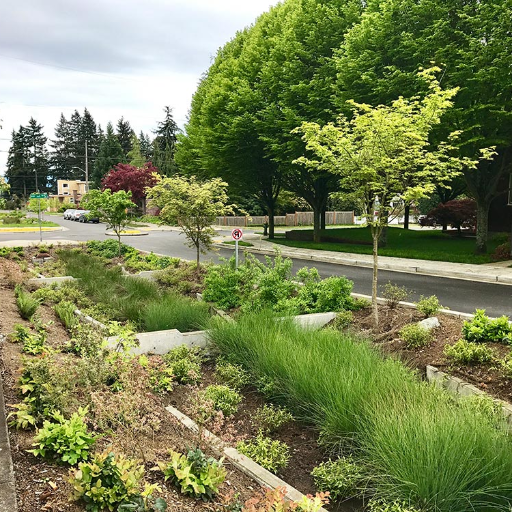
The success of nature-based urban systems such as those in Singapore underscores the importance of integrating greenery into city planning. This way, one can build sustainable environments that provide support for biodiversity, air quality, and the general quality of life. The approach not only serves as a possible solution to the dilemma of urbanization but also shows how cities and nature can exist side by side.
Example from Singapore
It is generally stated that Singapore has been successful in the implementation of GSI. In line with its “City in a Garden” vision, the country has worked to integrate greenery into urban planning. One big GSI project is a naturalized river channel design in Bishan-Ang Mo Kio Park, which transforms the park into a lively recreational area with a certain degree of flood resilience: the naturalized river now takes care of excess stormwater during heavy rains.
The park is more than 62 hectares in size and offers habitat for various flora and fauna, promoting urban biodiversity. PUB Singapore claims that this project has been able to reduce peak flooding level by as much as 30%, thus proving the effectiveness of such nature-based techniques. Furthermore, the ABC Waters program has decorated more than 100 water locations, further accentuating the possible avenues in sustainable urban hydrology.
Such efforts put forth Singapore’s vision to balance urban development with environmental conservation, which other cities can adopt in facing similar urbanization and climate-resilience predicaments.
Example from Copenhagen
With regard to water management and climate adaptation, Copenhagen emerges as a global frontrunner when considering sustainable urban design. An integrated cloudburst management plan stands at the heart of advanced efforts in combating extreme rainfall events whose severity has been amplified by changes in climate. Thus, some of the major projects under it include establishing green roofs, permeable pavements, and urban retention spaces for better water absorption and reduction of flood risk.
It has been reported that the city has invested over €1.5 billion for these endeavors in making its infrastructure future proof. The city’s adaptation measures are projected to lessen the damage of potential flooding by up to 80% for events forecast through 2100. But quite importantly, these efforts also contribute to Copenhagen’s endeavors for becoming the world’s first carbon-neutral capital by 2025, mainly by cutting down emissions through umbrella urban planning embedding nature-based solutions.
Lessons Learned from Case Studies
There are myriad takeaways that cities can glean from Copenhagen in terms of forward-focused climate resilience and urban sustainability. One of the major ones is the paramount importance of crafting the city with a mind towards infrastructure which allows for a certain measure of adaptation in the long run. For instance, it is the way in which Copenhagen integrates green roofs, permeable pavements, and systems for storing water underground-extending the gamut of nature-based solutions into urban development-that makes for benefits both environmentally and financially while simultaneously socially acceptable. The same data from Google Search inform us that green roofs can absorb up to 75% of rainwater during heavy storms, therefore, greatly reducing runoff and enhancing insulation quality for buildings.
The other takeaway is investing in preventive measures rather than reactionary ones. This more than 1.5 billion euro spending in Copenhagen may look exorbitant, but the 2025 ICLEI report (Local Governments for Sustainability) paints the picture ahead: inaction on climate adaptation needle to surpass the upfront investment by a great measure in cost. For instance, in the cities that are unprepared, just total flooding alone could result in damages of billions of euros every year, according to some latest estimations.
Lastly, one can say that involving the community and collaborating with stakeholders is going to be the deciding factor between success and failure. The participatory designs implemented in Copenhagen’s urban neighborhoods support an integrated approach whereby solutions meet environmental challenges and cater to the needs of a particular locale. Surveys done in 2022 further clarify that those neighborhoods characterized by high community involvement in decision-making recorded a 30% higher satisfaction from their implemented solutions than opposed to neighborhoods marked by limited public participation.
Drawing on his thorough data analyses, significant investment, and leadership steeped in the community, the case studies around Copenhagen supply a framework that other cities can reflect on in their own way to build resilience against climate change, which is fast moving from being an issue to a threat.
Future Trends and Innovations in GSI
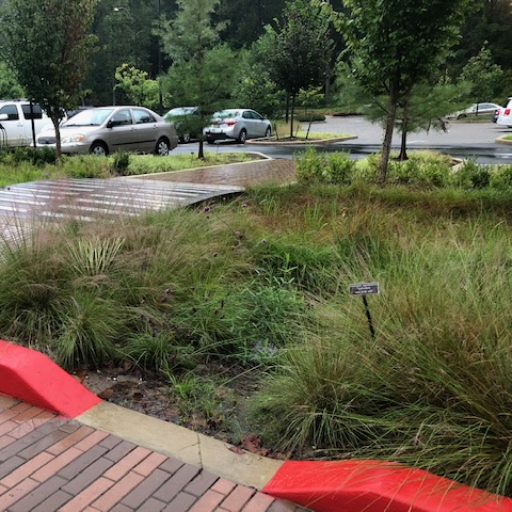
I anticipate that the future trends and innovations in Green Stormwater Infrastructure will probably centre on advanced technology like smart sensors and AI for the most efficient water management. Other nature-based techniques such as urban wetlands and green roofs will be employed to counter climate challenges and bring communities together for shared sustainability.
Emerging Technologies in Stormwater Management
Emerging technologies are giving new face to stormwater management and are trickling to the layers of smart stormwater systems, the green management of stormwater. The prominent new technological development is the use of IoT and smart sensors in stormwater systems. Such devices keep track of water levels, flow rates, pollutant concentration, etc., in real-time. This allows a quicker response to incidents potentially involving flooding or contamination. Scientific studies have demonstrated a 30% mitigation of urban flood risks, the direct result of the deployment of such technologies.
Also, big data analysis using AI is becoming increasingly relevant in forecasting storms, routing stormwater more effectively, and cutting maintenance costs. As an example, predictive AI models can forecast the intensity of rainfall and hence provide instructions on managing stormwater detention basins adequately. A 2021 study identified that utilizing AI for stormwater management systems could reduce maintenance costs by 20 to 40%.
While trending are new permeable pavement materials making water permeable to underground groundwater, this type of technology also supports unconventional water reuse and rainwater harvesting. Cities such as Philadelphia are employing permeable pavement systems along with advanced rainwater capture systems and have recorded up to an 80% reduction in peak stormwater discharge during heavy rainfalls.
These advanced technologies are surely symbiotic with other common nature-based solutions such as bioswales and engineered wetlands to tackle the ever-growing stormwater problems in an ever-changing climate. The adoption of those systems would certainly help cities become resilient to floods and ecologically sustainable.
Policy Changes Affecting GSI Adoption
Recent shifts and evolutions in policy are persuading the wide-scale adoption of green stormwater infrastructure by both municipalities and private sectors. A report indicates that infrastructure improvement federally funded in the great USA nowadays backs billions of dollars in pursuit of GSI initiatives as a means toward improving climate resilience. An example of this would be the Bipartisan Infrastructure Law, which includes $50 billion for climate change adaptation programs, part of which is allocated to urban water management solutions such as GSI.
Cities like Philadelphia and Seattle are already looking ahead, with Philadelphia’s Green City, Clean Waters program having realized a 90% reduction in combined sewer overflows in GSI implementation areas. Likewise, Seattle has initiated GSI-centered measures like roadside rain gardens, which potentially cut down stormwater runoff volumes by over 20% annually. Such forward-thinking policy frameworks and measurable outcomes testify to the fact that GSI is increasingly viewed as a vital tool in sustainable urban water management.
Community Engagement in Sustainable Practices
Sustaining community involvement is a good deed facilitating the long-term success of the green infrastructure (GSI). Community involvement cultivates an ownership feeling among people, who also provide local labor to maintain and even improve the system. Hard data support these kinds of initiatives. For instance, the Green Infrastructure Program of New York City recognizes the significance of community engagement by facilitating workshops and community events to train residents on practices related to stormwater management. This program has led to installing over 11,000 green infrastructure assets and has since contributed to a staggering 200 million gallons of stormwater capture annually.
Seattle RainWise incentive programs demonstrate that community-based initiatives are just as effective. RainWise offers rebates to households for installing rain gardens or cisterns, thereby cutting stormwater runoff by more than 35 million gallons per year and directly engaging thousands of homeowners in sustainability efforts. These are examples of how city-government partnerships and community engagement can ease the economic burden on public systems while raising the profile and awareness of GSI benefits, thereby spurring further adoption. These case studies suggest that community involvement coupled with technology and engineering advances forms the foundation for popwashikin obenstate.
Reference sources
1. Plant Density and Health Evaluation in Green Stormwater Infrastructure Using Unmanned-Aerial-Vehicle-Based Imagery
- Authors: Jingwen Xue, Xuejun Qian, D. Kang, James G. Hunter
- Journal: Applied Sciences
- Publication Date: May 13, 2024
- Citation: (Xue et al., 2024)
- Summary:
- This study addresses the evaluation and maintenance of green stormwater infrastructure (GSI) using UAV-based imagery. It developed an integrated framework that combines UAV technology with software tools like WebOpenDroneMap, ArcMap, and Canopeo.
- Key Findings: The framework achieved a high prediction accuracy for plant density (R² = 95.8%) and identified variations in plant density (63.63% to 75.30%) across different GSI types and conditions.
- Methodology: UAV images were collected and processed to analyze plant health and density, utilizing NDVI maps to assess vegetation health and inform maintenance strategies.
2. Development of Composite Alginate Bead Media with Encapsulated Sorptive Materials and Microorganisms to Bioaugment Green Stormwater Infrastructure
- Authors: D. S. Tanmoy, Gregory H LeFevre
- Journal: Environmental Science: Water Research & Technology
- Publication Year: 2024
- Citation: (Tanmoy & LeFevre, 2024)
- Summary:
- This research focuses on enhancing the efficiency of GSI in urban areas by developing composite alginate beads that encapsulate sorptive materials and microorganisms.
- Key Findings: The study suggests that these composite beads can improve the removal of pollutants from stormwater, thus enhancing the performance of GSI.
- Methodology: The study involved laboratory experiments to assess the effectiveness of the alginate beads in bioaugmentation processes.
3. Do baseline assumptions alter the efficacy of green stormwater infrastructure to reduce combined sewer overflows?
- Authors: Mayra Rodríguez, Giovan Battista Cavadini, Lauren M. Cook
- Journal: Water Research
- Publication Date: February 1, 2024
- Citation: (Rodríguez et al., 2024, p. 121284)
- Summary:
- This paper investigates how different baseline assumptions impact the effectiveness of GSI in mitigating combined sewer overflows (CSOs).
- Key Findings: The results indicate that varying assumptions can significantly alter the perceived efficacy of GSI, suggesting the need for standardized evaluation metrics.
- Methodology: The study employed modeling techniques to simulate CSO scenarios under different assumptions and evaluated the performance of GSI.
Frequently Asked Questions (FAQs)
What is Green Stormwater Infrastructure (GSI)?
Green Stormwater Infrastructure (GSI) is a myriad of practices and elements intended to update an intervention on stormwater in a sustainable manner. Being the other side of the gray infrastructure, which are pipes and drains, GSI asks for the utilization of natural processes: collecting, filtering, and infiltrating rainwater to lessen water pollution and develop local ecosystems.
How Do GI Practices Help Water Management?
While green infrastructure practices offer numerous benefits for water management, they handle the stormwater runoff by infiltrating third space into the ground, resulting in reduced runoff volume otherwise entering our waterways. This further mitigates flooding and acts as a pollutant filter, improving water quality.
What Are Some Examples of Green Infrastructure Elements?
These green infrastructure elements include rain gardens, green roofs, stormwater planters, and permeable pavements. They are all intended to mesh with the built environment, thereby enhancing the public realm and servicing such needs as stormwater management.
What Are the Economic Benefits of GSI?
The implementation of green stormwater infrastructures represents huge economic benefits. GSI reduces the need for expensive gray infrastructure upgrades, thus lowering water bills and maintenance costs for citizens. Well-designed and maintained public spaces are also a source for prospects toward valuation and tourism, indirectly contributing to the local economy.
How Do Stormwater Planters Work?
Stormwater planters collect stormwater runoff from such surfaces as parking lots and streets. Water is filtered by the soil and roots of plants before being slowly released into the ground. This process provides good stormwater runoff management and adds to the greening of cities.
What Is the Role of Best Management Practices in GSI?
The best management practices (BMPs) are essential within the overarching framework of green stormwater infrastructure to ensure that elements of GSI operate effectively to address the very specific challenges encountered through stormwater management, while at least maximizing the benefit of the issues confronted by the GSI to the communities and environment.
How Does the Integration of Green Infrastructure into Urban Planning Benefit Communities?
The integration of green infrastructure into urban planning benefits communities on many fronts. It adds to the aesthetic value of neighborhoods, improves air quality, and provides habitat for wildlife. These infrastructures also hold the capacity to prevent storms successfully and, thus, stop the risk of flooding and water pollution.
What Additional Benefits Does Green Infrastructure Provide for Riparian Areas?
Green infrastructure also provides additional benefits to riparian areas by enhancing the health of water bodies and ecosystems. By filtering runoff, GSI reduces the pollutants entering waterways, thereby sustaining healthy aquatic habitats and supporting biodiversity, which, in the long run, bolsters the overall environment.

